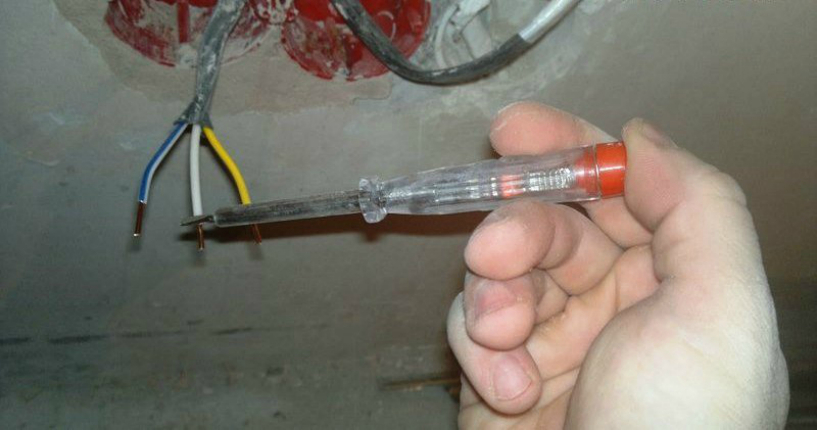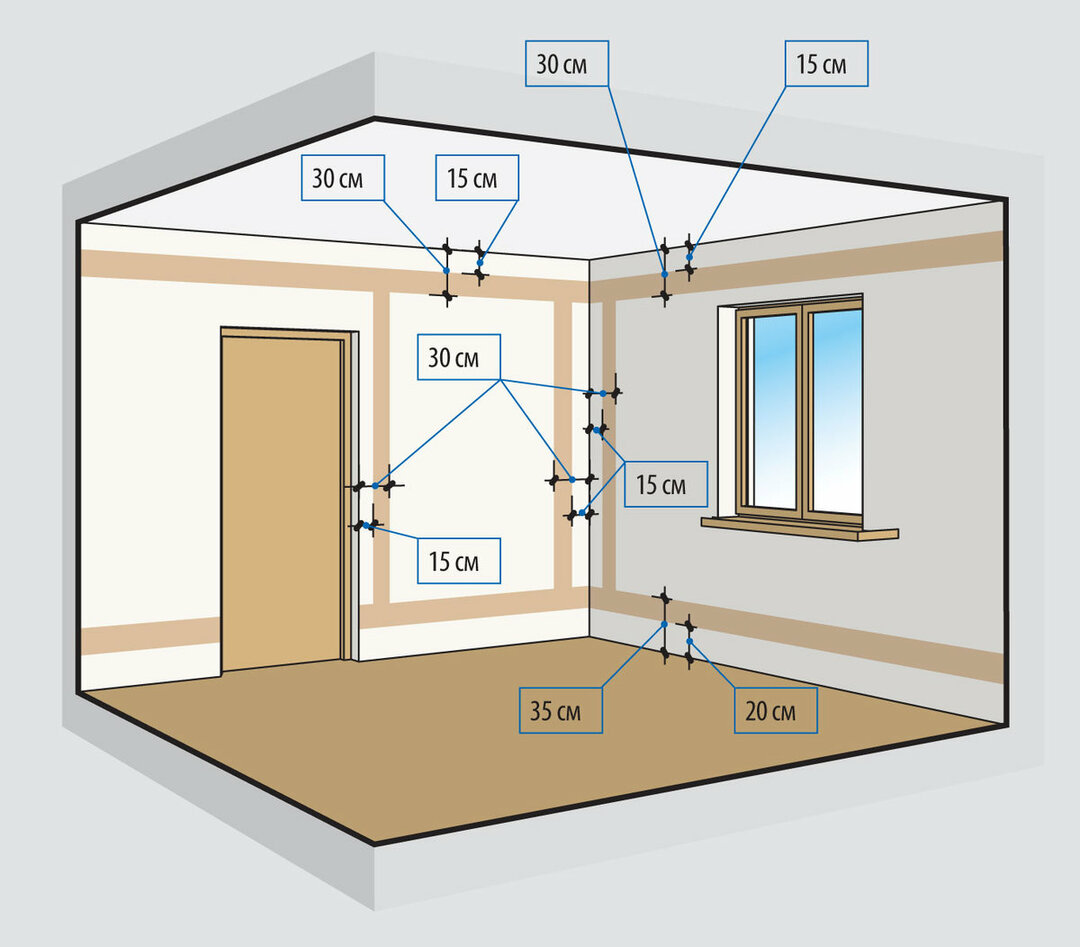Fluorescent lamps are distinguished by applying a special component to the flask. We saw it in the composition of cathode-ray tube televisions - it is a phosphor. When a substance is irradiated by an electromagnetic wave, light of the visible range is generated. For example, in TVs it is green, blue and red. But in fluorescent lamps usually used exclusively white( with a slight shade of lilac).Because products belong to daylight. In fact, the technical characteristics of fluorescent lamps and luminaires, for example, luminosity( luminous flux) and spectrum, do not allow to consider the product as a complete replacement for the Sun. Before the advent of LEDs, this type of luminaire was considered the most economical.
How does a fluorescent lamp
Among the energy-saving lamps come across fluorescent. Understand the store terminology. These are discharge halogen lamps, the inner surface of the bulb of which is coated with phosphor. If we take the early options working on mercury vapor, then the primary electromagnetic wave of radiation falls into the infrared range. The eye will not see it. But the phosphor, irradiated by an infrared source, produces white light.

Principle of operation
The process arises due to the ionization of the gas mixture inside a glass flask. The current flows through the plasma through two electrodes located at the ends of the reservoir. The initial discharge is formed due to an abrupt increase in the voltage up to the threshold of breakdown. Then the resistance of the fluorescent lamp falls dramatically, it would burn without using ballast. Independently, the flask will not work:
- It is supposed to form the arc ignition voltage( gas ionization).
- Maintain discharge smoldering in a gaseous environment.
Ballast and starter fluorescent lamp
Together with fluorescent lamps are the starter and ballast. The first is any kind of device capable of raising the voltage. In the simplest case, it is a rechargeable capacitor or autotransformer. Throttle, rather, the ballast. The fluorescent lamp detects a section with negative resistance: the nominal value decreases with increasing current. As a result, the electrodes would be burned, if not in series with them, the ballast was turned on, demonstrating variants of the types.
Ordinary
An ordinary resistor is placed in series with low-power lamps, especially neon, in series with the cathode and anode filaments. Its resistance after ignition becomes decisive for the magnitude of the current. At power more than 2 W the technique is usually not applied. But remember, when it comes to energy-saving lamps, the equivalent in the form of incandescent lamps is up to 1000% of the nominal - already 20 watts.
A similar ballast often goes hand in hand with LED lamps. Resistors are noticeable - small black cubes on the LED strip. Lighting drivers are much more complicated.

Luminosity of the
lamp Self-regulating
Self-regulating ballast was used in the 30s-60s of the last century. Difference: with increasing current resistance increases. A typical example of such a device is considered to be a simple incandescent lamp, the thread of which in the cold state is distinguished by a relatively small resistance value. When heated, the situation changes radically. The filament bulb at 60 W when measured with a tester gives 60 Ohms on a tungsten filament( 220 x 220/60 = 800 W).
This apparent exaggeration is leveled by warming up in the process. The current through the bulb at the initial moment is extremely large, but lasts a fraction of a second. For this reason, the moment of burnout usually coincides with the click of a wall switch. In the past century, baretter was often used as a self-regulating load. And for selected mercury lamps, a thin stroke is used: tungsten filaments are included in the cathode circuit. This limits the current as the material heats up. Minus in the simultaneous drop in efficiency and increase in losses.
Reactive
Jet ballast is considered the most common type of low-cost fluorescent lamp-based devices. Inductive load does not allow the current to increase infinitely. But energy saving fluorescent lamps falls due to lower power factor. This is due to a phase shift between the voltage and current generated on the inductance. The ballast often includes a compensating capacitor. Its purpose is to minimize the phase shift. This saves from 5 to 25% of energy, which looks significant with a large amount of space.

Fluorescent luminaire
Electronic
Electronic ballast is more common in miniature products. For example, where the type of base of fluorescent lamps corresponds to the generally accepted E27.At the base there is a miniature electronic converter. The fluorescent lamp is powered by voltage, the frequency of which is very different from 50 Hz. But the flickering effect seen in the previous cases disappears.
Let's say that not all fluorescent lamps at E27 are supplied with the specified advanced ballast. Rather, it is permissible to call the driver, because the device properly forms the supply voltage. Usually, an inverter( pulse) power supply is used, when a frequency of 20 kHz comes from a thyristor switch through a small-sized transformer.
With fast blinking, the flickering of fluorescent lamps ceases to be noticeable. At the same time, galvanic current isolation is provided, and a limitation automatically occurs. The frequency of 20 kHz was not chosen randomly. This is the minimum threshold at which the efficiency of a fluorescent lamp tends to unity. A particularly sharp jump is noticeable at a frequency of 10 kHz, then there is an increase to the above limit. Such drivers for fluorescent lamps can be called ultrasonic. Their advantages are obvious, in addition, increased power factor.
Classification of a ballast of a luminescent lamp by functions
The mentioned classification characterizes, rather, the element base, but the alternative is much more convenient for choosing from the counter. It conditionally shows the role of the fluorescent lamp ballast in the device:

Types of fluorescent lamps
- Dimensions of fluorescent lamps will be greatly reduced if you use the instant start ballast( Instant Start).There is no additional heating of the cathode, but simply a voltage of 600 V( for example) is applied to the flask. The result is an instant start. Minus - this leads to accelerated wear of the cathode, and the advantages of fluorescent lamps in the form of high energy savings are leveled by a low service life. Wikipedia mentions 2,000 on and off cycles for a total working time of 20,000 hours. If we take a pencil, we calculate that the first parameter will become limiting.
- Technical characteristics of fluorescent lamps will improve significantly if you use the ballast quick start( Rapid Start).In this case, the preheating of the cathode, albeit insignificant, is performed, the time of operation cycles increases significantly and ceases to look like a very limiting factor.
- Dimmic ballast( Dimmable), as the name implies, allows you to adjust the brightness. From the definition it is clear that the device is not easy. Rather, it is already a driver, where with the help of special measures the discharge smoldering voltage is regulated, changing the brightness over a wide range. In such devices, more complex thyristors are used: the quadrak( the diak and the triac in the same package).For operation in the low voltage range( low luminous flux), a 10 kΩ resistor is switched on in parallel with the lamp. By this distinctive feature, drivers for fluorescent lamps of this type are recognized.
- Ballast with programmable start finely controls the cathode heating coil. Due to this, the number of on and off cycles reaches 100,000.Such devices are ideal in combination, for example, with motion sensors.
- Hybrid ballast operates on the industrial network frequency, flicker is noticeable. Along with the throttle, the electronic switch of the cathode heating circuit is turned on. This allows you to slightly reduce consumption.
The ANSI factor is used to assess ballast performance. In this case, the device is compared with a certain reference. Luminous efficiency of fluorescent lamps in lm is taken into account, all other things being equal. The reference factor is equal to one, and for a specific ballast is set in the range from zero to 100%.Low values are considered to be below 70%.This ballast is designed to work in a quick start mode, in order to avoid reducing the service life of the product.
It cannot be said that the ANSI factor becomes an expression of energy efficiency. Rather, it is the means by which designers are oriented to achieve specified visual effects.
Technical characteristics and properties of fluorescent lamps
In energy saving, fluorescent lamps were not equal to the output of LED.And today, their advantages are used when it is necessary to save money. Fluorescent lamps are significantly cheaper, but the luminosity is much inferior to the LEDs, all other things being equal( although the package shows approximately the same value).In addition, most cheap models are flickering. Considering the above, there is not much point today to save pennies when it is easier to profitable to buy LED lamps.
Fluorescent lighting remains an acceptable way to save on supplier bills. If you compare the time of work, it is reduced twice than in LEDs. There is a limit with the number of inclusions. A decent fluorescent lamp should not flicker. The driver in this case operates at a frequency of 20 kHz, which simultaneously increases the efficiency of the device. The easiest way to check is with a low quality camera. Do not turn on video mode.
The power of fluorescent lamps is usually not so high, so the flicker is noticeably weaker than that of low-quality LEDs. The latter is caused by the inertia of the plasma inside the flask. The main purpose of fluorescent lamps - energy conservation. According to the rules of European standards on the packaging of the product, the effectiveness is indicated in the form of a scale of colored arrows of different colors. The parameter rarely drops below category A. And if the appearance of a luminescent bulb resembles an incandescent bulb( on the counter), the mentioned scale helps to distinguish the desired product.
We believe that the disadvantages of fluorescent lamps are reduced only to the care of the past, supplanted by LED models. This is not too low price, not enough high energy saving, relatively low luminous flux. The unconditional advantages of the category described are the intricate shape of the flask. Such decisions regarding fluorescent lamps, like designers.
For the rest, it is recommended to look at the temperature of the glow. If it is high( from 4000 K), fluorescent lamps belong to the class of daylight. Otherwise, warm shades are obtained, rather relevant in the bedroom.


